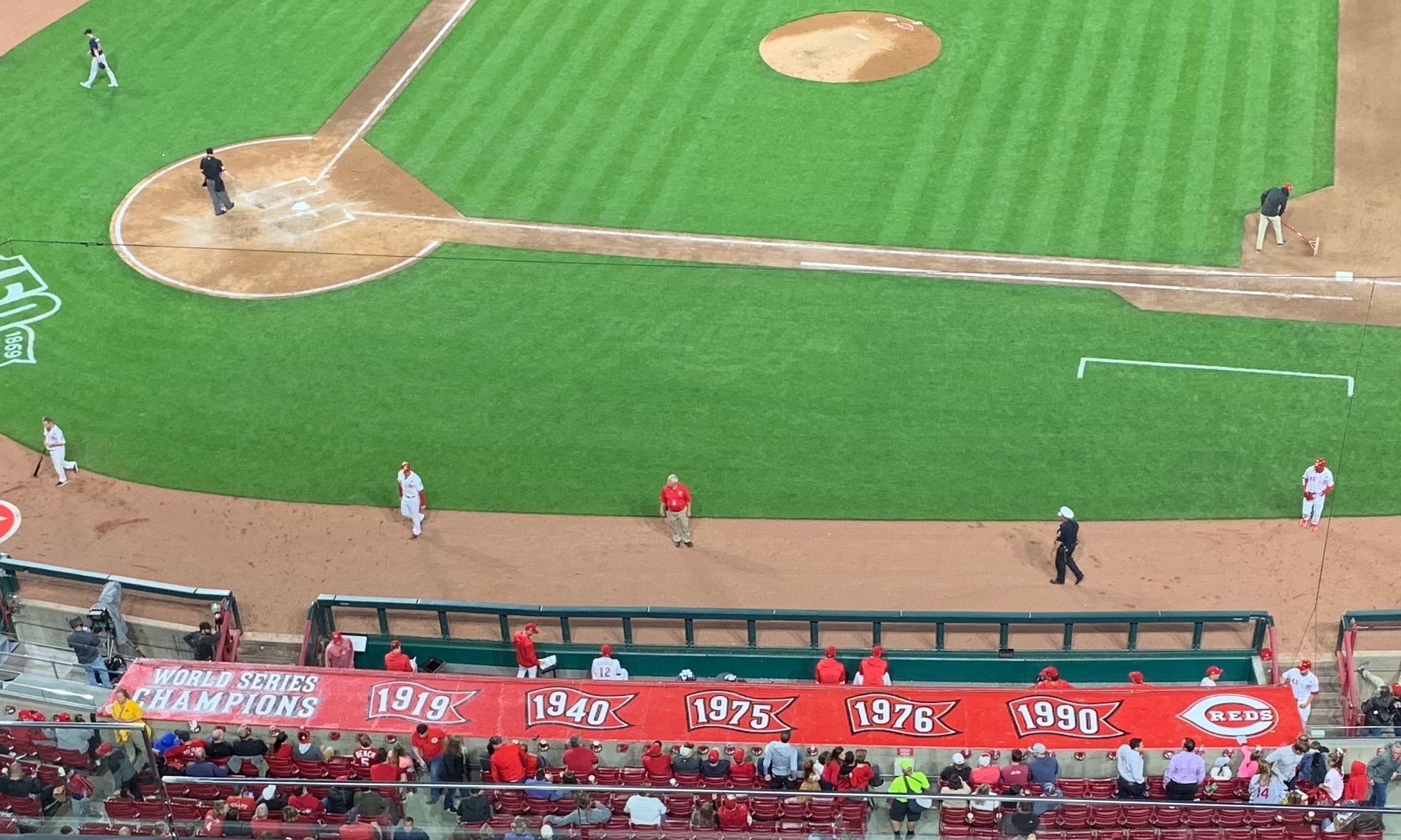
An important way to evaluate a hitter is analyzing his plate discipline.
We understood in Little League, although not really, when we yelled, “Hey batter … batter … batter … SWING!” That cheer reflected the notion that affecting our opponents’ swing choice was somehow vital. It turns out our boyish instincts were correct.
Let’s unpack the skill of plate discipline by looking at the decision to swing.
It’s easy to measure. A batter swings or he doesn’t. Umpires rule one way or the other on half-hearted check swings. The statistic Swing% expresses the percentage of pitches the batter sees that he swings at. Here’s the formula:
Swing% = Swings/Pitches
The average Swing% in the major leagues is about 45-46%. And while everything else about the sport of baseball, particularly hitting, is changing, Swing% has remained constant since it was first measured in 2002.

Using league average Swing% as the standard (blue line), let’s take a look at the Reds (red line) as a team over that same period of time.

For most of that stretch the Reds have been above MLB average in Swing% — meaning they’ve been aggressive, relatively speaking. Dusty Baker was manager from 2007-2013 and was quite public about prodding his players to swing early and often. Under Bryan Price and Jim Riggleman, the Reds returned to normal.
Looking at the first 30 games of 2019, the early returns under new manager David Bell show the club’s Swing% up sharply. Whether that reflects a change in philosophy from new hitting instructors, or a coincidence of several individual players boosting their swing-rate for different reasons, we don’t know yet.
Before we take a look at individual Reds and their early 2019 Swing%, let’s review what research shows about whether more swinging is good or bad in general.
Eno Sarris at The Athletic summarized the data:
“Swing less, and your strikeout rate goes up slightly. That’s the negative. But the positive is that your walk rate goes up, your slugging rate goes up, and your OPS goes up. Swinging less is mostly good, and if you put swinging less in the hands of an aggressive young hitter, it often leads to breakouts.”
Comparing a player’s Swing% to league average lets us begin to evaluate that hitter’s plate discipline. It shows whether he can be categorized – in general – as aggressive, patient or middle of the road.
Beyond general, career-based characterizations, a batter’s Swing% can become inflated at certain times due to a variety of factors. A player might swing more:
- To create an impression to win or keep a job
- When he joins a new team or has a new manager
- If he’s not confident in teammates following him in the order
- To get a head start after his pitch-reading skills and reflexes have deteriorated
- When pitchers are throwing him more strikes.
Let’s take a look at the swing-rate (Swing%) for individual Reds players:

Looking at career data, which for some players is more than a decade and for others is just a few years, you can group Reds position players into three distinct categories.
- Patient: Eugenio Suarez, Joey Votto and Jesse Winker
- Average: Tucker Barnhart, Derek Dietrich and Jose Iglesias
- Aggressive: Scooter Gennett, Matt Kemp, Jose Peraza, Yasiel Puig and Scott Schebler
In 2019, a few players – Barnhart, Suarez, Winker and Votto – aren’t contributing to the Reds Swing% surge in April. But several of the Reds did have elevated Swing%.
We can speculate on reasons for that enhanced aggressiveness.
Jose Iglesias, Yasiel Puig and Matt Kemp are playing for a new team and a new manager. Kemp and Iglesias might be starting early to compensate for declining reflexes. Jose Peraza has a new manager is unexpectedly competing for playing time.
Necessary caveats are necessary. It’s only 30 games into the season. Even though Swing% is a statistic that “stabilizes” early, that just means it’s a reliable indicator of what has gone on before, not a predictor for the future. This could end up being Small Sample Size nothings. Players change as the year goes on.


